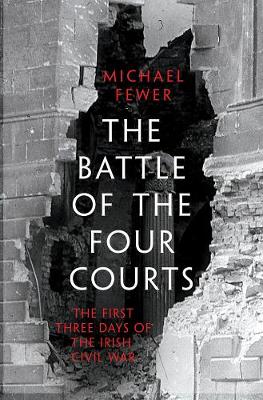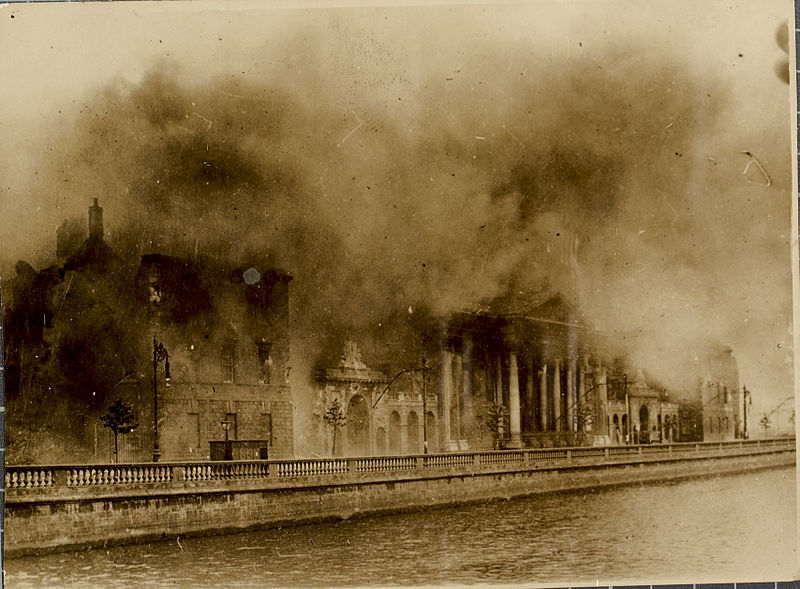The Battle of the Four Courts

Irish Legal News assistant editor Connor Beaton reviews an account of the 1922 battle between supporters and opponents of the Anglo-Irish Treaty which all but destroyed the Four Courts, home to the superior courts of Ireland.
For the last four years, the dome of the Four Courts in the heart of Dublin’s legal quarter has been obscured by scaffolding, a bleak reminder of the damage it sustained in the opening salvo of the Irish Civil War nearly a century ago. Though most Irish lawyers have seen first-hand the building’s enduring scars, few will know the intricate details of the siege that shaped the nascent Irish Free State.
In The Battle of the Four Courts, Michael Fewer sets out a captivating, blow-by-blow account of the three days which sparked a devastating 10-month war. He draws on various first-hand accounts and newspaper reports, as well as historic photographs and annotated maps, to take readers through a comprehensive explanation of each day of the siege, as well as the political context and aftermath, including the indecision over bringing the Four Courts back into use.
An architect for over three decades, Fewer demonstrates an impressive fluency with the construction of the Four Courts and the damage the buildings sustained from gunfire and explosions. His descriptions of how the stonework crumbled under persistent shelling from British-loaned 18-pounder guns, and how fire spread through the complex to destroy priceless archives, are technical but not dry; instead, they paint a vivid image of the scale of destruction visited over the course of 60 hours on the historic buildings still central to Irish legal life.

Pictured: The Four Courts on fire, 30 June 1922
Fewer regularly challenges contemporaneous and subsequent accounts of the siege, pointing out where they are contradicted by more reliable sources; though other historians of the Civil War will undoubtedly disagree with at least some of his conclusions, he takes deliberate care to explain how he reached them. He brings the complicated character of Irish politics in the early 1920s to life with brilliant anecdotes – the old woman who offered a cup of tea and eggs on toast to a National Army soldier but then, once firing began, “changed her mind about hospitality and smashed the teapot over [his] head”; or the Cumann na mBan volunteer who was slipped a handful of ammunition by a sympathiser and had her pockets so weighed down she feared they would burst and scatter the bullets in front of enemy soldiers. He patiently explains the relationships between key players on both the pro-Treaty and anti-Treaty sides.
Fewer effectively conveys the sheer spectacle of the battle, which unfolded in full view of thousands of civilians, with surreal descriptions of a “great shower of papers, legal documents and records of all kinds” falling to earth “like giant confetti”, against the sound of “pounding on the street … the noise of many large books raining down onto the street from the sky”.
As the eventual completion of the Four Courts renovation and the centenary of the Civil War looms, those interested in learning about the history of the period will find The Battle of the Four Courts an engaging, compelling and accessible place to start.
The Battle for the Four Courts by Michael Fewer. Published by Head of Zeus, (£20.00 Hardback) 320 pp.









